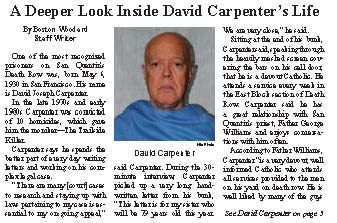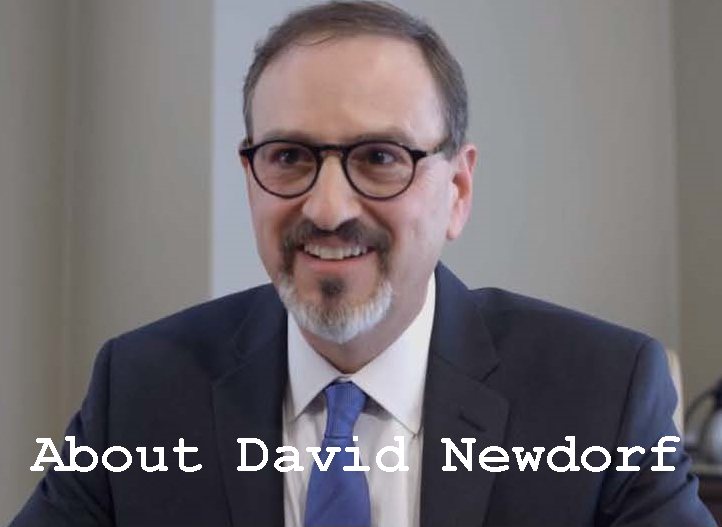Prisoner scoops the media with an exclusive Death Row interview with the “Trailside Killer.”
August 5, 2013 by David Newdorf
Filed under News
A California prisoner scooped the local and national media by obtaining an exclusive 30-minute face-to-face interview with one of California’s most notorious serial killers. Writing for the San Quentin News, prisoner/journalist Boston Woodard interviewed fellow inmate David Carpenter, a.k.a. the Trailside Killer, for the July 2013 issue of the inmate-published newspaper. Carpenter was convicted of killing nine victims from 1979 to 1981, mainly women, on Northern California hiking trails. As far as I can tell, this was Carpenter’s first interview in several decades. More notably, it was one of only a handful of interviews from California’s Death Row in the past decade.
How did Woodard do it? No doubt, he is a tenacious reporter. (Disclosure: I represent Mr. Woodard in an ongoing lawsuit over claims that prison officials retaliated against him because they did not like an article he wrote that was critical of prison officials.)
Regarding this story, however, being a prisoner may have worked to Woodard’s advantage. Access to California’s Death Row by outsiders, including journalists, is severely limited. Only one outside journalist in recent years has interviewed Death Row inmates in person on Death Row. She had to get approval from the top official at the California Department of Corrections and Rehabilitation.  Under California prison regulations, she was limited to impromptu interviews with “random” prisoners who agreed to talk. Those regulations do not allow journalists to set up face-to-face interviews with specific inmates.
Under California prison regulations, she was limited to impromptu interviews with “random” prisoners who agreed to talk. Those regulations do not allow journalists to set up face-to-face interviews with specific inmates.
Since media limitations were adopted in the 1990s, very few journalists have had face-to-face interviews with the more notorious residents of Death Row. Regulations still allow prisoners to correspond with or speak to journalists by telephone. Some journalists have also gained access by getting a prisoner to add him or her to the prisoner’s visiting list, just like a friend or family member.
Not that prisoners get free reign to report whatever and wherever they choose inside the institution. Prison officials had to approve Woodard’s interview and the resulting story that ran in the San Quentin News. The story was picked up by a small community newspaper based in Fresno, Calif., that runs many of Woodard’s stories about prison life. So far, the mainstream press hasn’t picked it up — notwithstanding some interesting tidbits.
Here’s a short excerpt from the article, in which Carpenter maintains that he was railroaded by prosecutors and biased jurors:
To close the interview, Carpenter was asked, “If and when authorities ever catch the real Trailside Killer, what do you hope happens to that person?”
Carpenter’s response was, “I hope he gets a fair trial.”
Does this story signal a trend toward greater transparency and media access to California’s prisons? I think it is too soon to say. At a minimum, the officials who green-lighted Woodard’s story deserve credit for allowing it.
This is a welcome change compared to events of the recent past. Legislative efforts to relax media restrictions stalled in 2012. And Woodard has had his share of trouble from prison guards and administrators resulting from his writing about prison life. He has written frequently about the obstacles he’s faced, which included being thrown in solitary confinement and removed from his job as the editor of a prisoner newspaper (at a different prison). Some of Woodard’s articles have been collected in an anthology titled Inside California’s Broken Prison System.
Woodard’s current lawsuit, Woodard v. Haviland, Case No. 11-CV-01807-LKK-JFM, is pending in U.S. District Court for the Eastern District of California.










